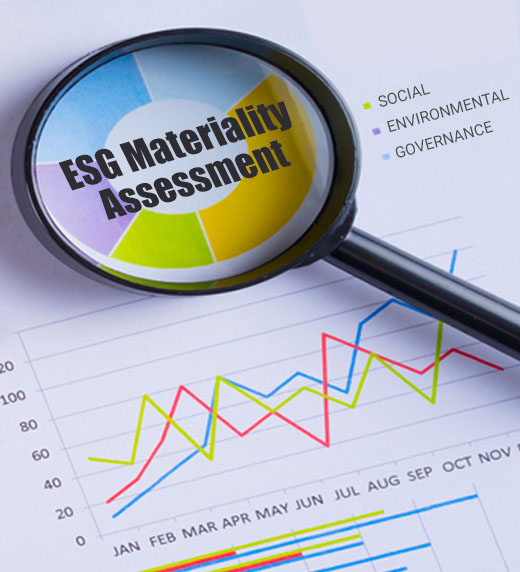There is no one-size-fits-all approach to conducting a materiality assessment. In this blog, I will give you some of the common steps that you can follow to conduct a materiality assessment effectively and efficiently:
• Define the scope and objectives of your materiality assessment. For example, what are the main drivers and purposes of the materiality assessment? Who are the target audiences and stakeholders of the materiality assessment? What are the boundaries and time horizons of the materiality assessment?
• Identify the potential ESG issues that could be relevant for your company and your stakeholders. For example, what are the main environmental, social, and governance topics that could affect or be affected by the company’s activities? What are the sources of information that could help to identify these topics? What are the existing frameworks or standards that could provide guidance on these topics? This data can be collected by using various methods and tools, such as stakeholder surveys, interviews, workshops, benchmarking, media analysis, etc.
• Assess the importance of each ESG issue for the company and its stakeholders. For example, what are the criteria or indicators that could measure the importance of each issue? How can these criteria or indicators be quantified or qualified? How can stakeholder input be obtained and incorporated into the assessment?
• Prioritize and validate the most material ESG issues. For example, how can the results of the assessment be presented in a clear and concise way? How can a materiality matrix or a materiality map be created to visualize the results? How can the results be verified and validated by internal and external experts or stakeholders?
• Communicate and use the results of the materiality assessment. For example, how can the results be communicated to internal and external audiences in a transparent and accessible way? How can the results be used to inform company strategy, targets, actions, and disclosures/reporting? How can the results be monitored and updated over time?
I hope this blog post has helped you to understand what materiality assessment is and why it is important for companies’ ESG reporting. If you want to learn more about how I can help you with your materiality assessment or ESG reporting, please contact me on:
+31623023832.
kmarrien@gmail.com
I look forward to hearing from you!
